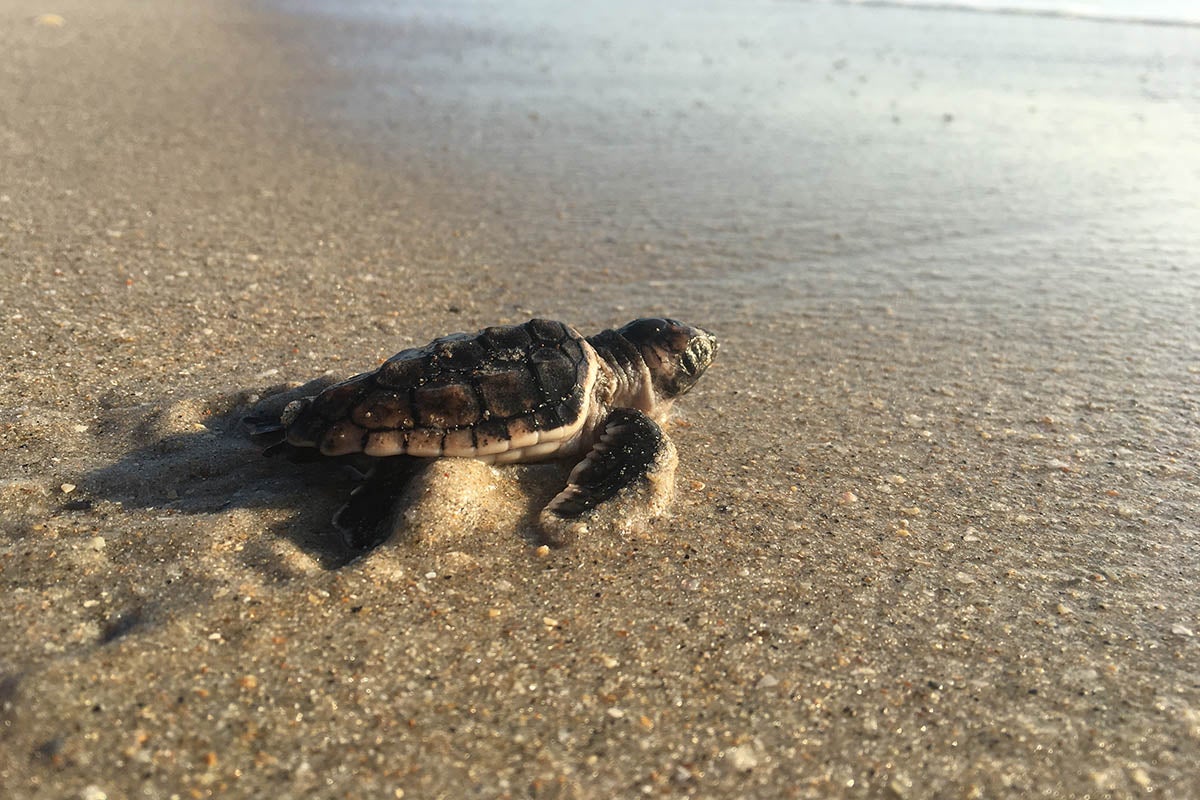Sea level rise and hurricanes are a threat to sea turtle nesting habitat along national seashores in the Southeast, but a new study predicts the greatest impact to turtles will be at Canaveral National Seashore.
The University of Central Florida-led study, which was published recently in the journal Ecological Applications, examined loggerhead and green sea turtle nests to predict the amount of beach habitat loss at Canaveral, Cumberland Island, Cape Lookout, and Cape Hatteras national seashores by the year 2100. Sea turtles help maintain the coastal ecosystem and are indicators for the health of sandy beaches.
When comparing sea turtle nesting density with predicted beach loss at the sites, they found nesting habitat loss would not be equal. The researchers predicted that by 2100, Canaveral would lose about 1 percent of its loggerhead habitat, while the three other seashores will lose between approximately 2.5 to 6.7 percent each. Although Canaveral’s percentage loss is smaller, the impact at this national seashore will be greater because of its nesting density.
“Canaveral is part of the core loggerhead nesting area for the Southeast,” says Marta Lyons, a preeminent postdoctoral fellow in UCF’s Department of Biology and the study’s lead author. “The nests are already pretty well packed in there, so even a small loss of area can have a big impact on nesting sea turtle populations.”
To determine beach loss at the study sites, the researchers used sea level rise and storm surge estimates and considered the effects of impervious structures along the shorelines, such as roads and buildings, in restricting natural beach movement. To do this, they developed a new method to calculate current and future sea turtle nesting areas that takes into account nesting data, beach length and width, and the impact of impervious surfaces.
Lyons says one of the goals was to create digital maps for the National Park Service to understand how sea turtle nesting areas will change with sea level rise and how resources could be managed.
“As the National Park Service thinks about future developments, whether that’s putting in a new lifeguard station or new bathrooms, this method of calculating current and future sea turtle nesting area can help them decide where to put them,” she says.
The study was funded by the National Park Service and the University of Central Florida’s Preeminent Postdoctoral Program.
Study co-authors were Betsy von Holle, a program director with the National Science Foundation; Maria A. Caffrey, a climate specialist based in Denver, and John F. Weishampel, a program director with the National Science Foundation.




